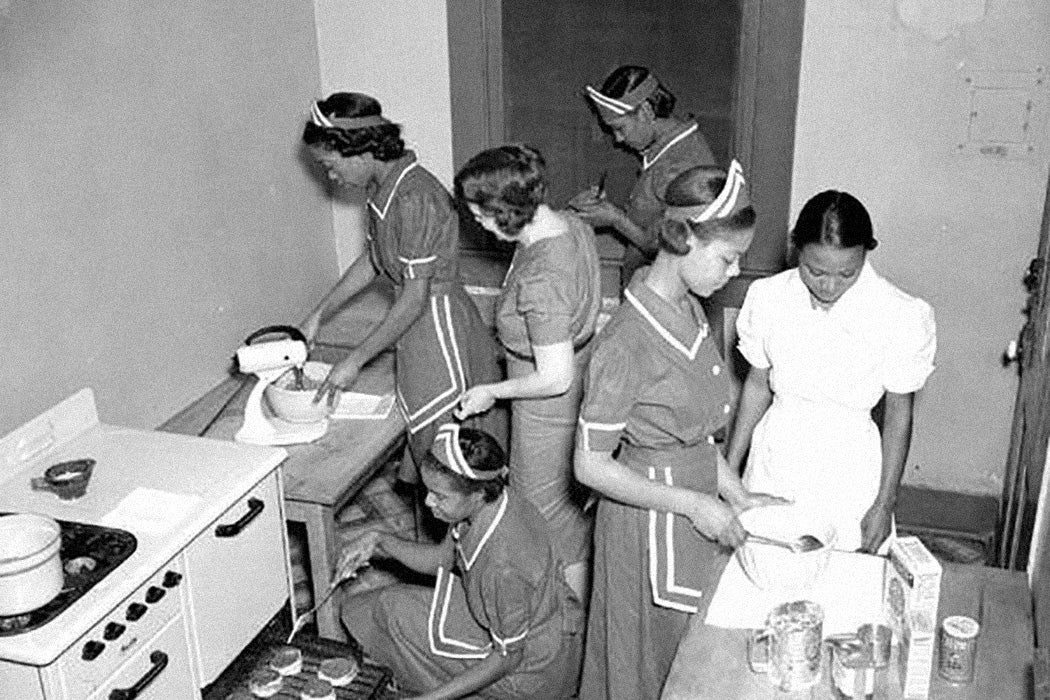In the 1930s, the New Deal transformed wage work in the United States. But infamously, many of its reforms excluded most Black workers, including women working as paid caregivers or housekeepers. Historian Keona K. Ervin explains how some Black women in St. Louis organized with the city’s Urban League to win their own labor reforms.
In the 1930s, Ervin writes, white women in St. Louis typically held clerical or manufacturing jobs, while 79 percent of Black women worked in domestic and personal service. These Black women workers generally wanted to avoid live-in positions while earning enough to support themselves and their families. But as the Depression took hold, this became harder. Many domestic employers paid no cash at all, compensating workers with room and board. Sleeping quarters might be a cot in the kitchen or a room with several other servants.
It made sense for domestic workers to bring their concerns to the St. Louis Urban League. Its Black women staffers devoted a great deal of effort to the specific needs of women workers. At a time when labor unions often ignored the needs of both Black people and women of all races, the UL helped workers organize to improve their situations. Like many unions, it also acted as a kind of hiring hall, giving employers a place to find Black domestic workers.
In June of 1933, the worsening Depression compelled President Franklin D. Roosevelt to sign the National Industrial Recovery Act, regulating wages, prices, and labor practices in industrial work. Ervin writes that groups like the UL extended those ideas to other workplaces. A national UL program called the Emergency Advisory Council (EAC) worked to interpret federal programs for Black communities and “see that Negroes are not left entirely out of the benefits of this legislation.”
In September of that year, the St. Louis UL, with support from the EAC, organized a mass meeting for domestic workers and their supporters. Between 500 and 1,000 people filled a local YWCA building, where the meeting opened with a rendition of “Lift Every Voice and Sing.” Domestic workers spoke about the need to earn enough to live comfortably and save for old age. Some noted that women were often the breadwinners in Black families. They needed a family wage to support husbands, children, and other family members.
Weekly Newsletter
The UL responded to workers’ demands by instituting a minimum wage for employers who used its employment bureau: $1.50 plus carfare for a day, or $5 plus carfare for a week. This was much less than workers had asked for, but it was the first minimum wage for domestic workers in the city. It was also high enough that some potential employers declined to hire workers through the UL. But the group stuck to the minimum wage, making it the standard for domestic work.
Together, Ervin writes, the UL staff and the domestic workers themselves “forged their own New Deal by literally writing black working-class women into protections that were not initially designed to include them.”
Support JSTOR Daily! Join our new membership program on Patreon today.







